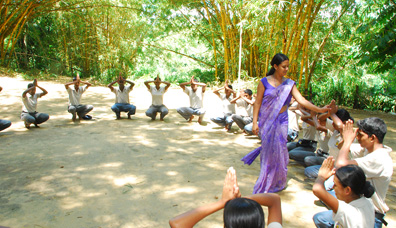Context: Youth represent over one fourth of Sri Lanka’s population. Despite this sizable representation, youth unemployment, at 16.7 per cent, was four times higher than the national average in 2015. Unrealistic expectations of the job market, insufficient skills for positions demanded by the labour market, and limited access to job training are some of the factors fueling Sri Lanka’s high youth unemployment rate.
Implementation of programme/initiative: Operating within the Ministry of National Policies and Economic Affairs (MNPEA), the National Youth Corps (NYC) is the main public institution for the Technical and Vocational Education and Training (TVET) of youth. Each year, the NYC enrolls 15,000 students, aged 18 through 28, at biannual sessions that offer a variety of subjects, such as physical education, life management, English and information technology. Vocational courses are taught in 48 centres nationwide, and students receive a stipend to support their studies. Preparing students for placement in private sector positions is the primary goal of NYC.
Main Challenges: Administrative issues and insufficient resources have inhibited NYC’s impact on youth employability. NYC centres lack the capacity to process the full extent of enrolment requests, leaving many qualified applicants unable to register for courses. Also, NYC’s career development services do not instill realistic expectations of the job market or ensure that all students secure employment following the completion of their training. Rural areas are particularly affected by insufficient career services, as less developed channels of communication make identifying and assisting disadvantaged and disabled youth difficult.
Results: A total of 70 per cent of NYC students have found employment after completing their training. NYC also plans to graduate at least 50,000 students, annually, by opening an additional 286 centres.
Moving Forward: Recently, the Sri Lankan Government launched several initiatives, such as the Sri Lanka Skills: Ten+One programme, to make TVET training more accessible and increase youth enrolment in programmes nationwide. To accommodate additional students, NYC must focus on expanding human resources and developing infrastructure for career development services. Strengthening career services will not only help youth without higher education obtain gainful employment, but also persuade students with higher education to pursue private sector vocations that offer equal or greater benefits than white collar positions. NYC should also consider expanding outbound training. The Naula Centre in Sri Lanka’s Matale District is NYC’s only outbound training facility, and their leadership and confidence building activities are important for preparing youth, particularly disadvantaged and disabled youth, to manage the social challenges encountered in the workforce.
Replicability: Given the need to register all current and future applicants, it is important to have adequate financial and administrative resources in centres that are part of any initiative. Another relevant consideration is establishing a monitoring and evaluation system to improve the efficiency of programme administration and ensure that additional resources effectively support career development and specialized services for vulnerable youth. Public and private initiatives targeting the skill development of vulnerable youth should be brought on board, while attention should be directed to improving the impact and sustainability of services by enhancing coordination with other organizations supporting vulnerable youth.
References:
Department of Census and Statistics. Quarterly Report of the Sri Lanka Labour Force
Survey. Battaramulla, Ministry of National Policies and Economic Affairs, 2015.
Ministry of National Policies and Economic Affairs. “About Us.” National Youth
Corps. Accessed 12 December 2017.
Ministry of National Policies and Economic Affairs. “Out-bound training” National
Youth Corps. Accessed 12 December 2017.
Acknowledgements:
This good practice was kindly edited by Ms. Elizabeth Linklater
Project Details
Date: June 11, 2018
